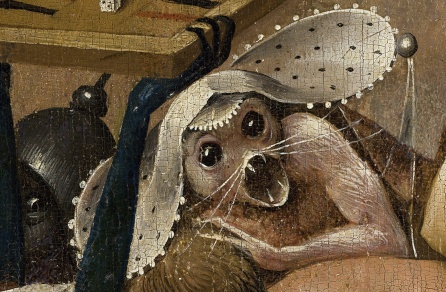
Why do pearls represent lies in this painting?
The artist was careful to choose symbolic items based on their essential, rather than perceived , nature. Throughout the painting, he exploits a common thing: things are rarely what they appear to be.
The painting is about the inner nature of man; hence, when we see pearls, the artist is conducting an inquiry into their own inner nature, and its relationship to the inner nature of man. The symbol was chosen by way of analogy; and the analogy is quite clear.
The fact that it deviates from our conventional understanding of pearls shows the subtlety of the artist's understanding of symbolic implications.
Pearls are considered to be of great value; yet they are not actual gemstones, but the organic product of mussel shells. They are products, in other words, not of inorganic nature, but of a living organism — in the same way that lies do not crystallize naturally out of the stone, but are made by man.
Pearls furthermore have a beautiful, lustrous exterior, making them enormously attractive. Yet their interior is formed around a worthless grain of sand. This is the exact point of the analogy. Inside — where it matters the most, at the heart of the entity — there is no value. This is exactly what lies consist of, and why pearls were chosen to represent them.
No one questions the value of pearls. Their external, or assigned, value goes unquestioned; yet their intrinsic value is essentially zero.
Hence the choice of pearls to represent lies.
A Doremishock resource
Contact
All material copyright 2013 by Lee van Laer. This work may not be reproduced without permission.